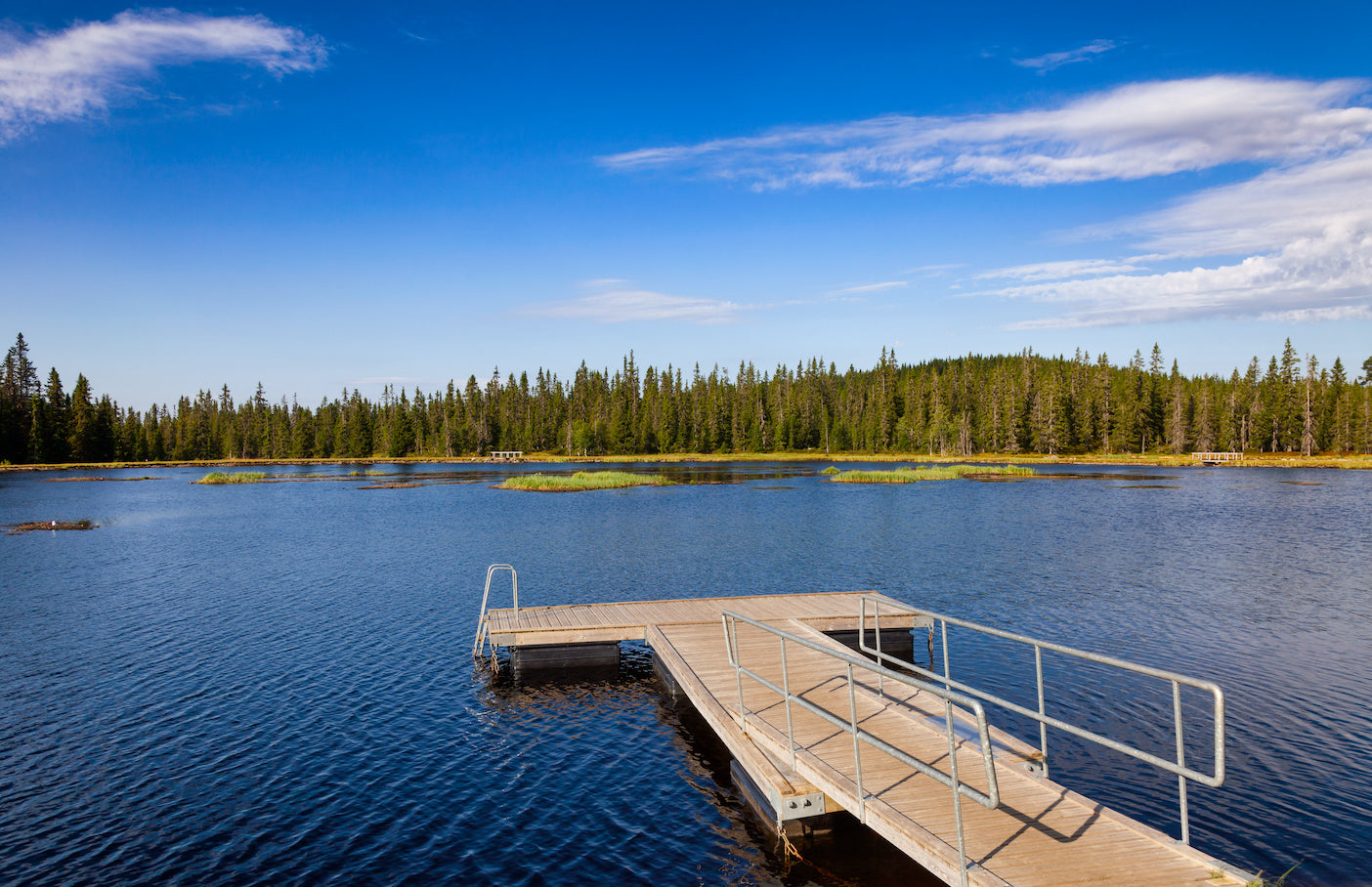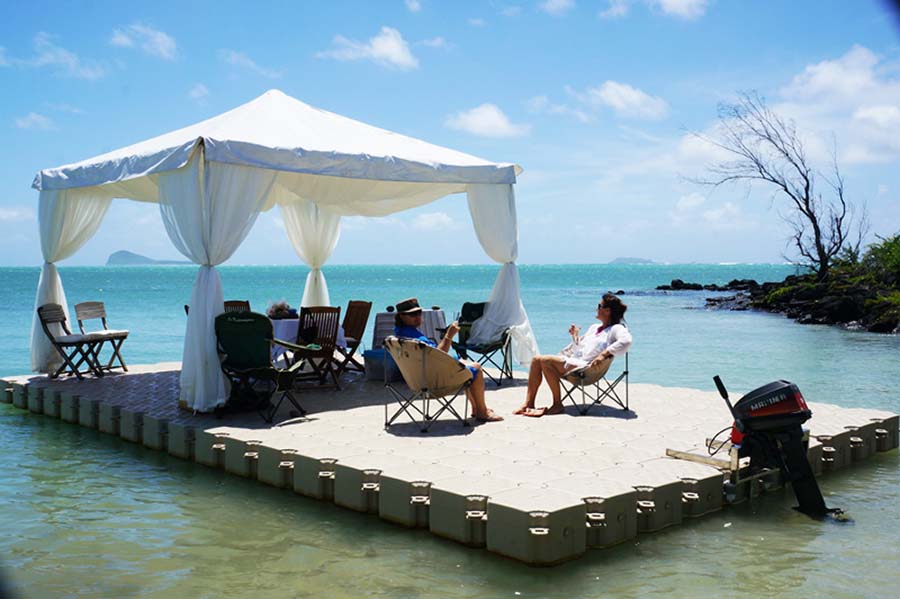Your Guide to Discovering the most effective Dock Company for Top Quality and Reliability
Your Guide to Discovering the most effective Dock Company for Top Quality and Reliability
Blog Article
Develop the Perfect Docking Solution With Floating Docks
Floating docks existing a functional option for a variety of maritime demands, adapting effortlessly to varying water degrees and varied vessel kinds. As we discover the necessary aspects that add to the efficiency of floating docks, numerous crucial factors relating to stability and maintenance will certainly emerge, elevating concerns concerning how to maximize your docking experience.

Benefits of Floating Docks
Floating docks offer countless benefits that make them an excellent choice for numerous maritime applications. Unlike repaired docks, floating docks surge and autumn with the trend, making sure consistent access for vessels.
In addition, floating docks are usually less complicated and quicker to mount contrasted to conventional set frameworks. Their modular style permits for simple setting up and disassembly, facilitating upkeep and relocation when required. This versatility is especially advantageous for temporary applications or in atmospheres where conditions may transform.
Floating docks additionally have a tendency to be a lot more eco-friendly, as they reduce disruption to the seabed and surrounding aquatic ecological communities. Their resilient nature reduces the threat of damages to aquatic life, advertising a healthier setting. In addition, these docks can be tailored to suit various vessel dimensions, making sure that they meet details operational demands - floating dock company.
Inevitably, the combination of versatility, convenience of setup, and ecological considerations makes floating docks a very efficient option for a vast array of maritime requirements.
Picking the Right Materials
Choosing the ideal products for floating docks is vital to ensure stability, longevity, and resilience. The option of materials straight impacts the dock's efficiency in different ecological problems, including direct exposure to water, sunshine, and potential wear from aquatic website traffic.
Typical products used for floating docks include aluminum, wood, and high-density polyethylene (HDPE) Aluminum is light-weight, corrosion-resistant, and requires marginal upkeep, making it an outstanding choice for longevity. Nonetheless, its initial price can be greater compared to other materials.
Timber, while aesthetically enticing and giving a traditional appearance, can be prone to rot and insect damages if not appropriately treated. Consequently, using pressure-treated wood or normally resilient varieties like cedar or redwood can reduce these issues.
HDPE is a prominent selection because of its resistance to UV rays and chemicals, in addition to being eco-friendly. floating dock builder. It is light-weight and available in various colors, enabling modification
Eventually, the best product selection will certainly depend on specific needs, consisting of spending plan, desired looks, and ecological factors to consider. Cautious evaluation of these aspects will certainly result in a effective and durable floating dock solution.
Layout Considerations for Stability
When developing floating docks, making sure security is an essential facet that can significantly impact their performance and safety. Security in floating dock style is influenced by different variables, consisting of buoyancy, weight distribution, and the setup of components. An optimum buoyancy system should make use of materials that provide enough lift while lessening weight. This balance makes sure that the dock continues to be above water, even under differing tons.
Weight circulation is important; equally dispersing tons throughout the dock avoids turning and enhances stability. Larger styles can use enhanced security, particularly in rough water conditions, while longer docks may call for extra supports to avoid drooping.
One more crucial factor to consider is the ecological influence, including wave activity and wind. Including functions such as sidewalls or skirting can assist internet mitigate the impacts of environmental pressures, preserving stability in negative conditions. Eventually, a mix of thoughtful layout, product choice, and understanding of environmental factors will certainly produce a floating dock that satisfies both stability and safety needs.
Setup Tips and Methods

Following, safeguard the required permits and abide by regional regulations, which might dictate installation methods and ecological factors to consider. Engage a certified professional experienced in floating dock setups if needed. Usage top quality products designed for aquatic environments to improve resilience and durability.
When positioning the dock, align it identical to the coastline to assist in very easy gain access to. Make certain that the anchoring system is robust, employing concrete blocks or helical supports to support the dock versus wind and wave action. It's critical to account for seasonal water level variations, including possible ice motion in colder environments.
During the setup, double-check the dock's floatation and security before wrapping up the anchoring. Consistently check the installation for any type of signs of wear or damages. By following these ideas linked here and techniques, you can attain a safe, functional, and cosmetically pleasing floating dock installment that meets your requirements.
Upkeep and Treatment Guidelines
Maintaining and caring for floating docks is crucial to prolonging their life expectancy and making certain secure usage. Regular assessments need to be conducted to identify any type of indications of wear, damages, or aquatic growth. Try to find splits, loose installations, or stained locations on the dock's surface area, as these issues can endanger structural integrity.
Cleansing is essential. Use a pressure washer to remove algae, barnacles, and debris, which can accumulate in time. For stubborn growth, consider environmentally friendly cleansing representatives that will not hurt water life.
Furthermore, inspect the mooring lines and anchors often to ensure they are protected and complimentary from deterioration. Change any kind of torn or harmed lines promptly to preserve stability.
Throughout severe weather condition, such as tornados or freezing problems, take precautionary visit the website actions. Secure the dock with extra mooring lines and, if practical, get rid of any removable elements to avoid damage.
Verdict
In verdict, the application of floating docks provides a reliable and versatile docking option suitable for different maritime applications. With correct installation and routine maintenance, floating docks can give efficient and trusted docking experiences for a broad variety of vessels.
As we discover the vital components that add to the effectiveness of floating docks, several crucial elements pertaining to security and maintenance will emerge, increasing inquiries about exactly how to maximize your docking experience. Unlike repaired docks, floating docks rise and fall with the trend, making certain consistent ease of access for vessels.When making floating docks, making sure security is a basic aspect that can substantially impact their performance and safety and security. Security in floating dock layout is influenced by different variables, including buoyancy, weight circulation, and the arrangement of parts. Inevitably, a mix of thoughtful style, material selection, and understanding of environmental aspects will certainly produce a floating dock that satisfies both stability and safety requirements.
Report this page